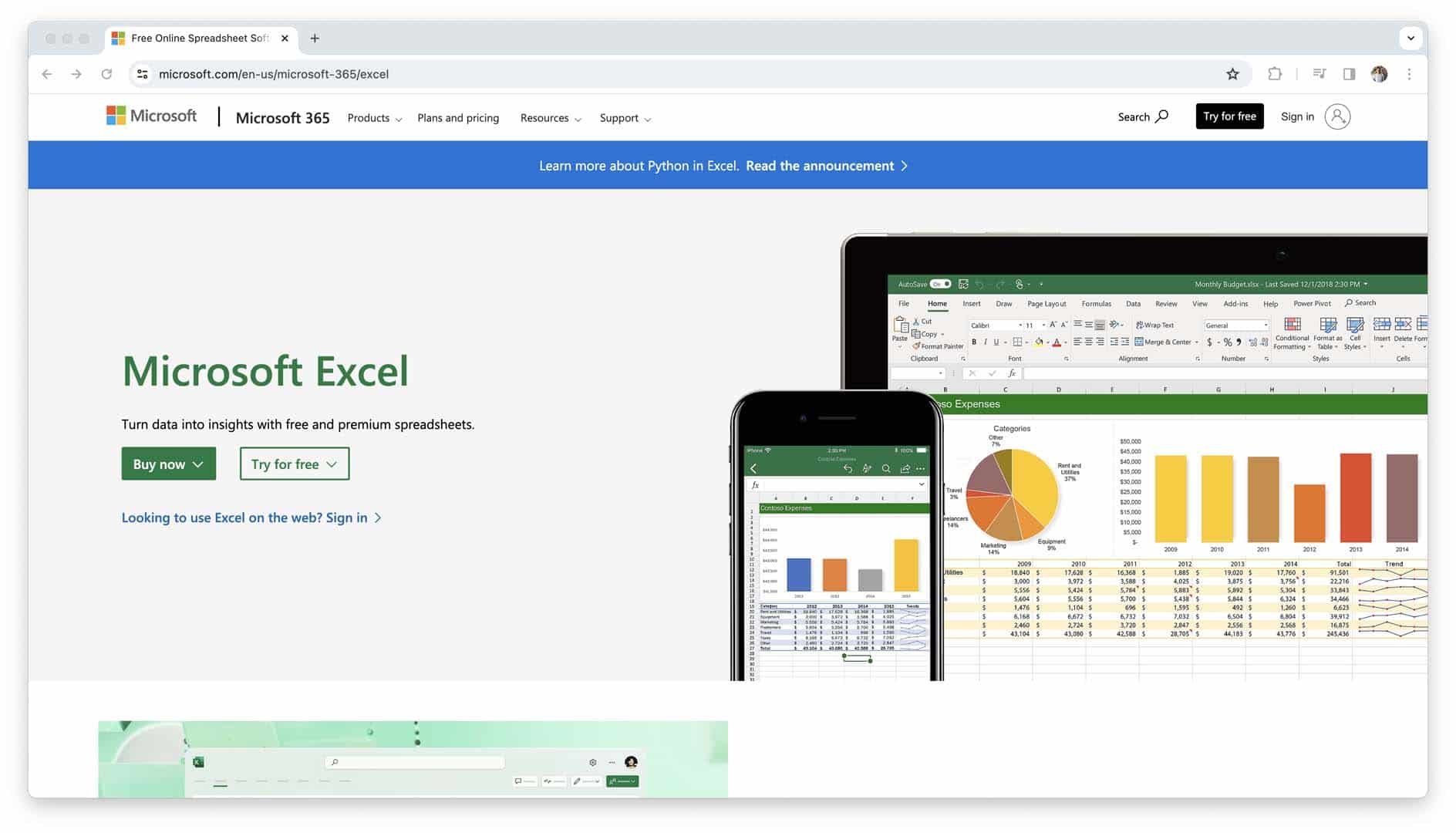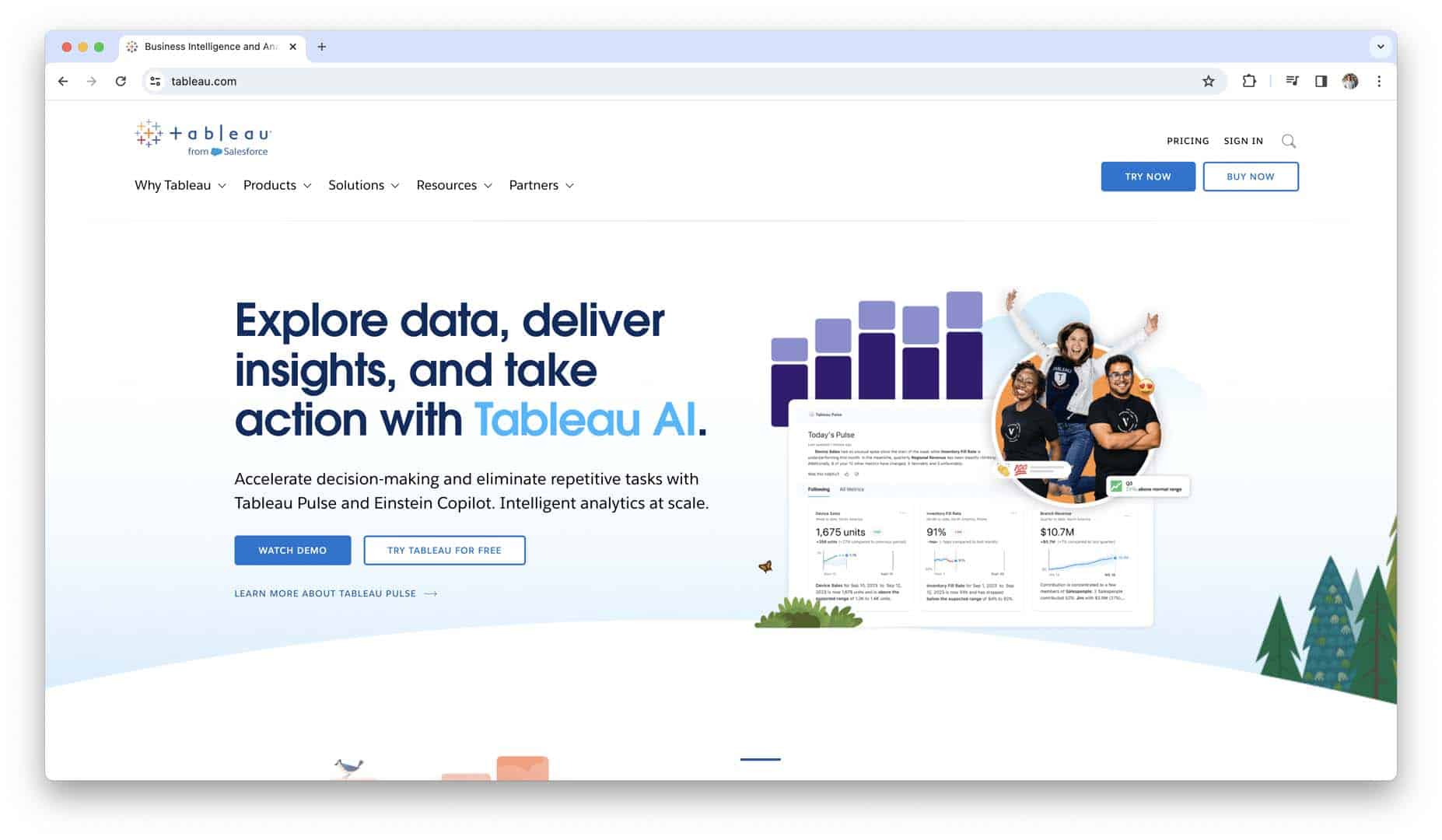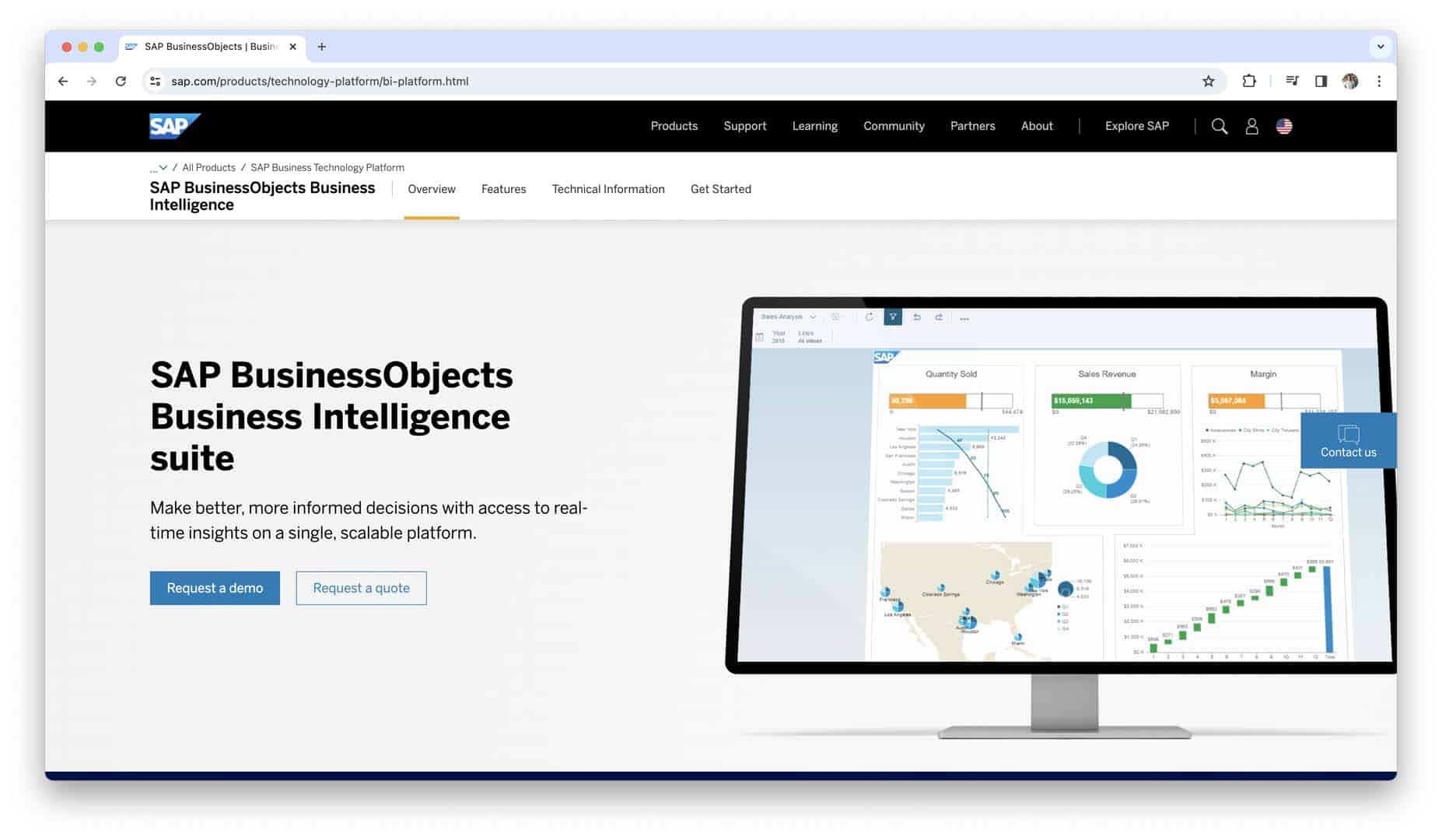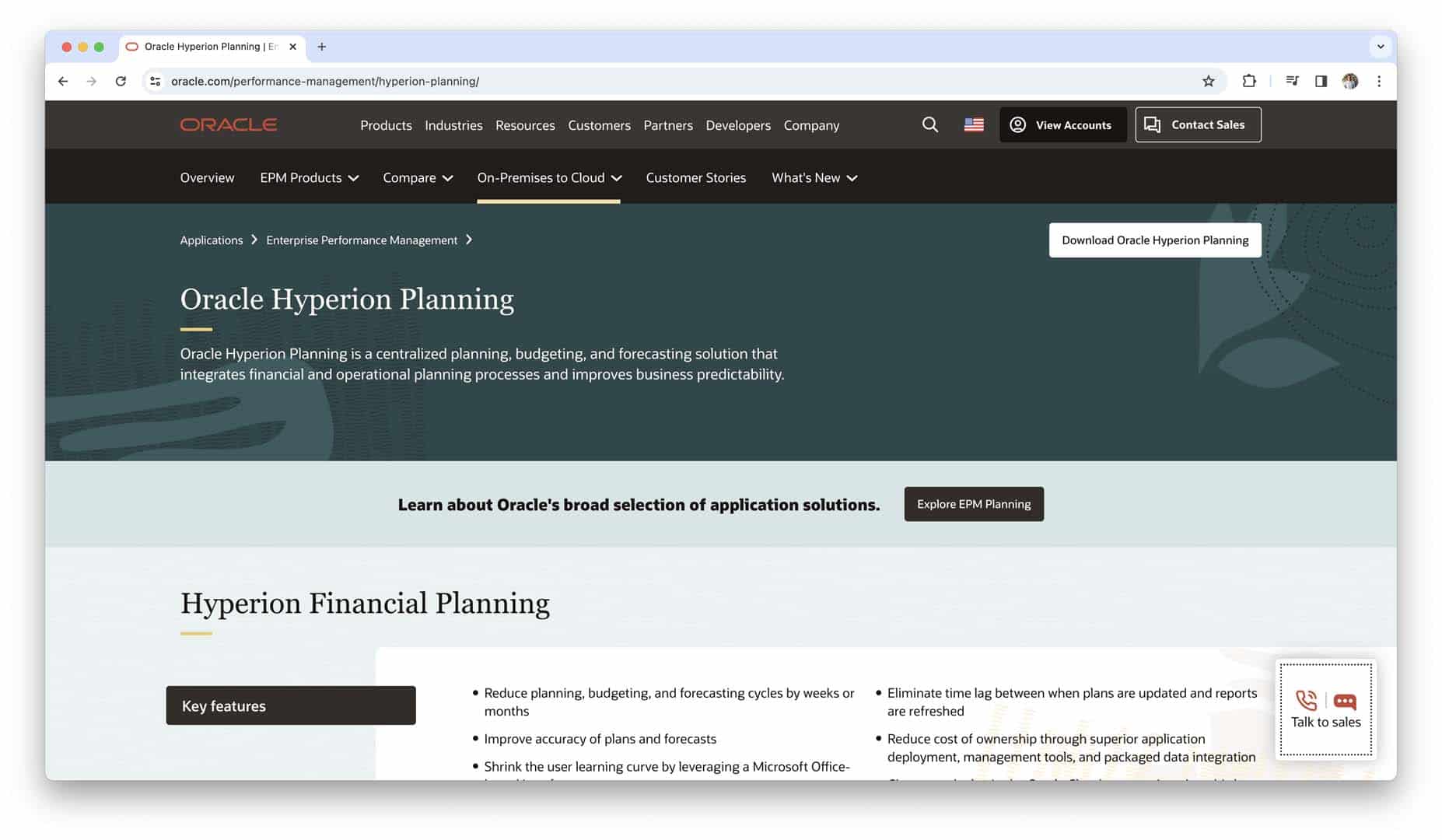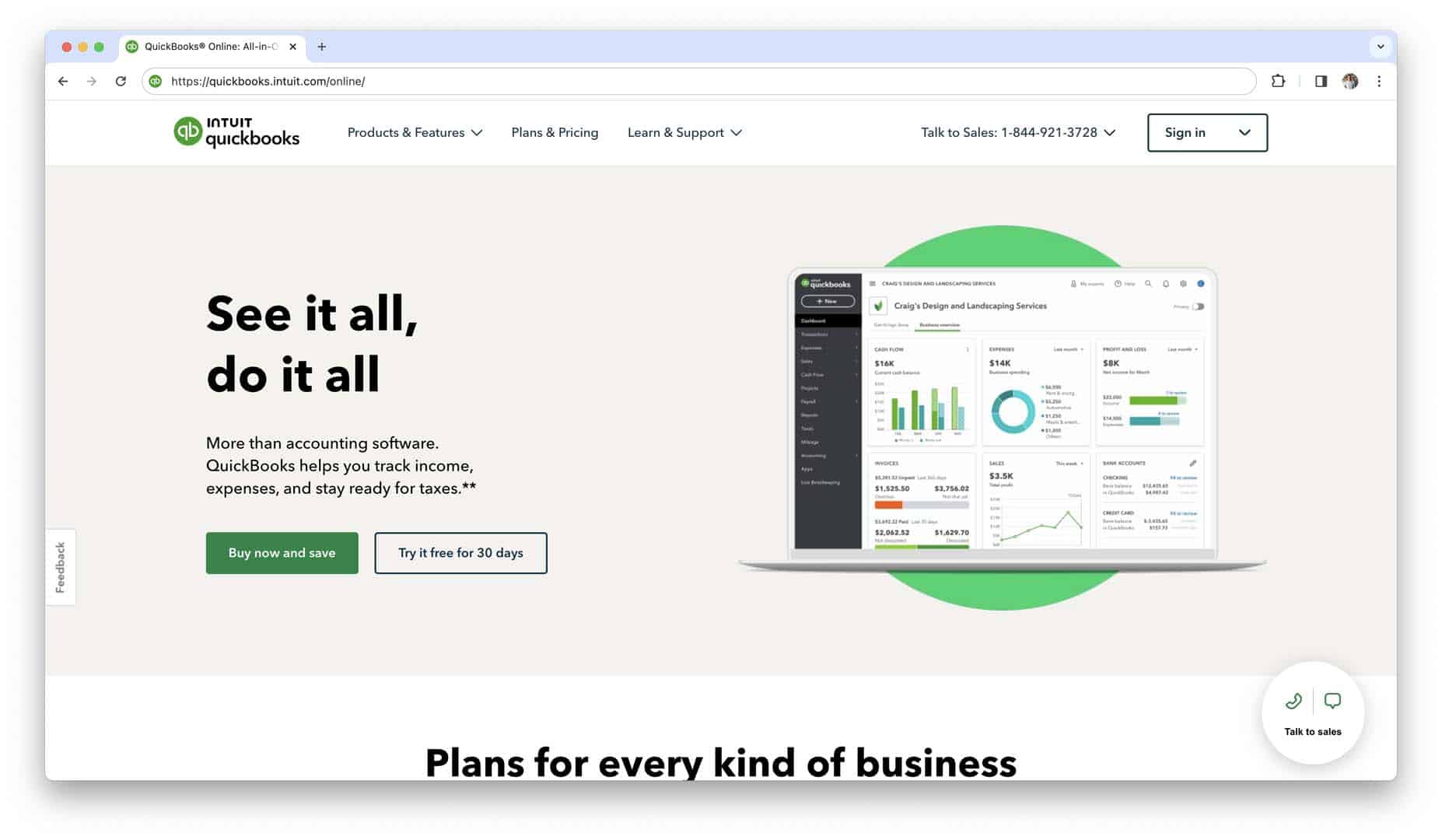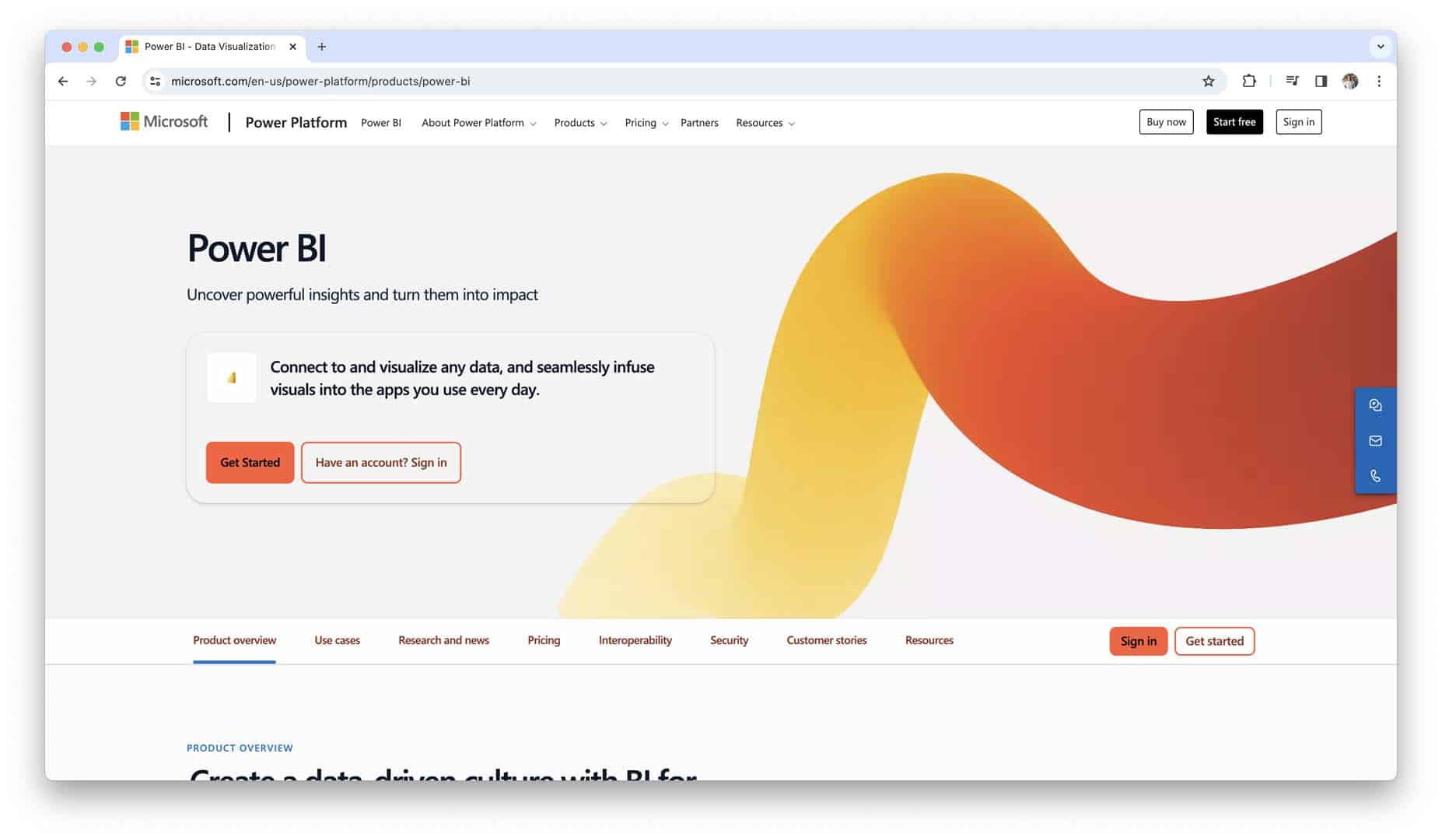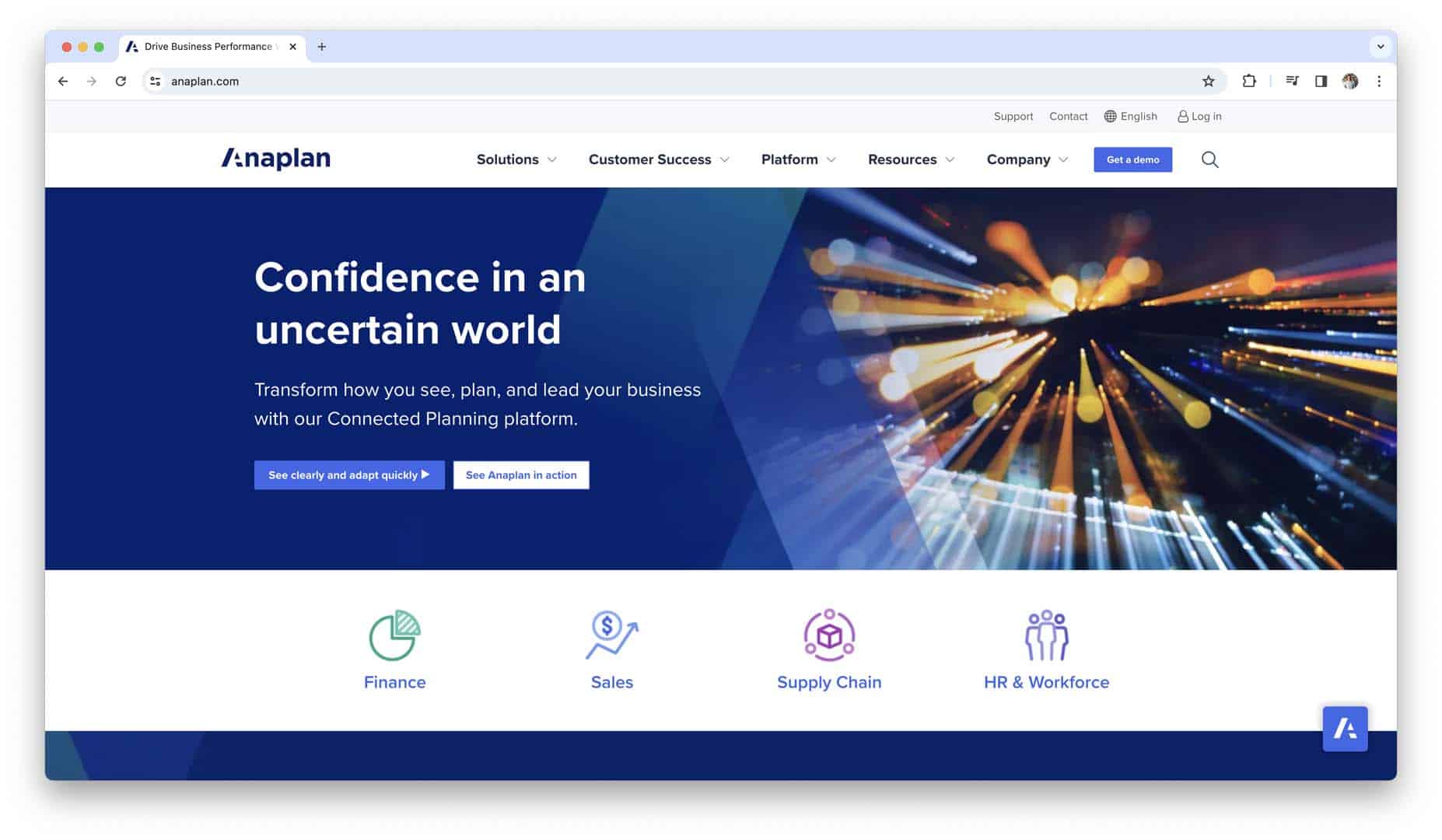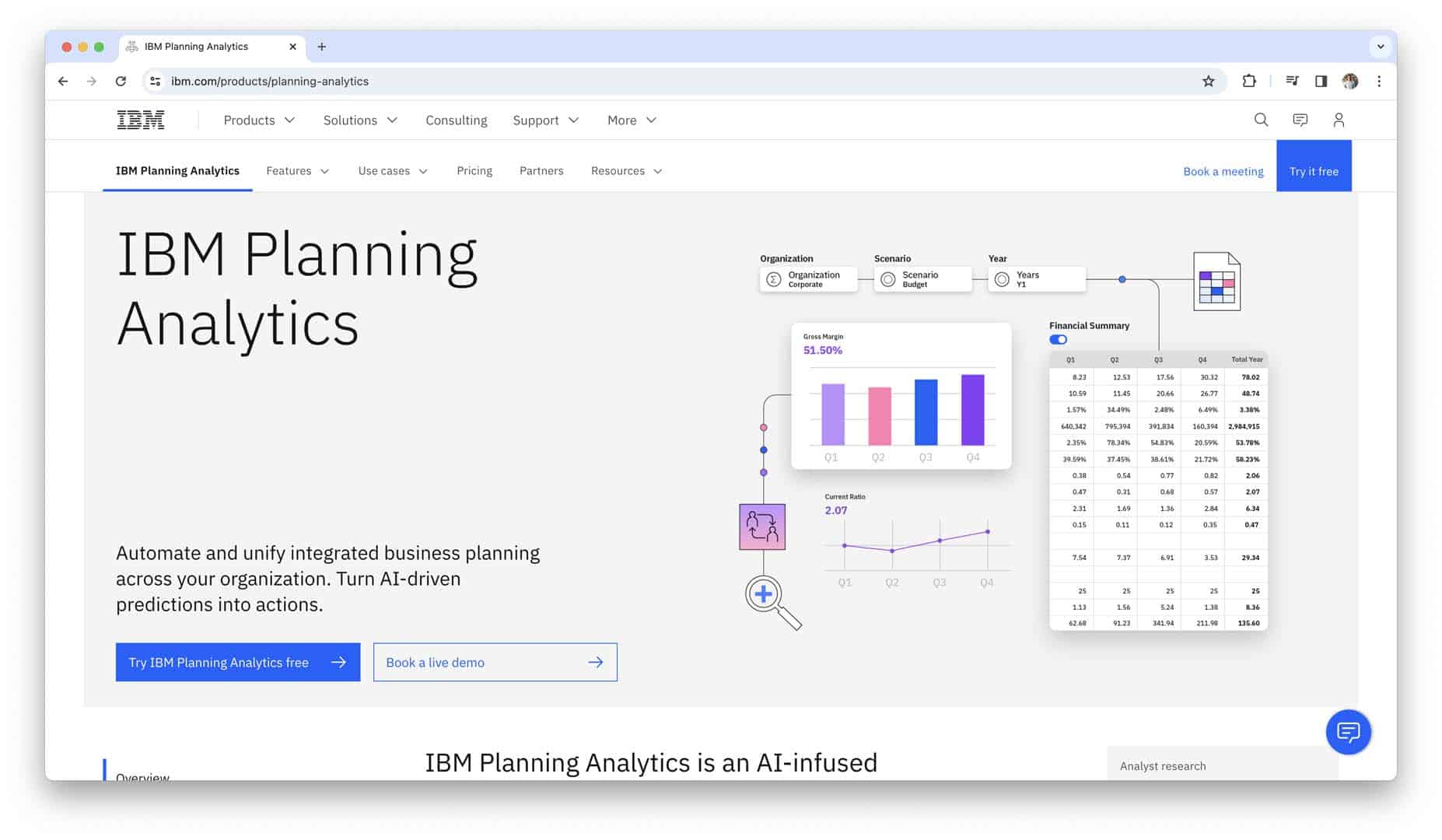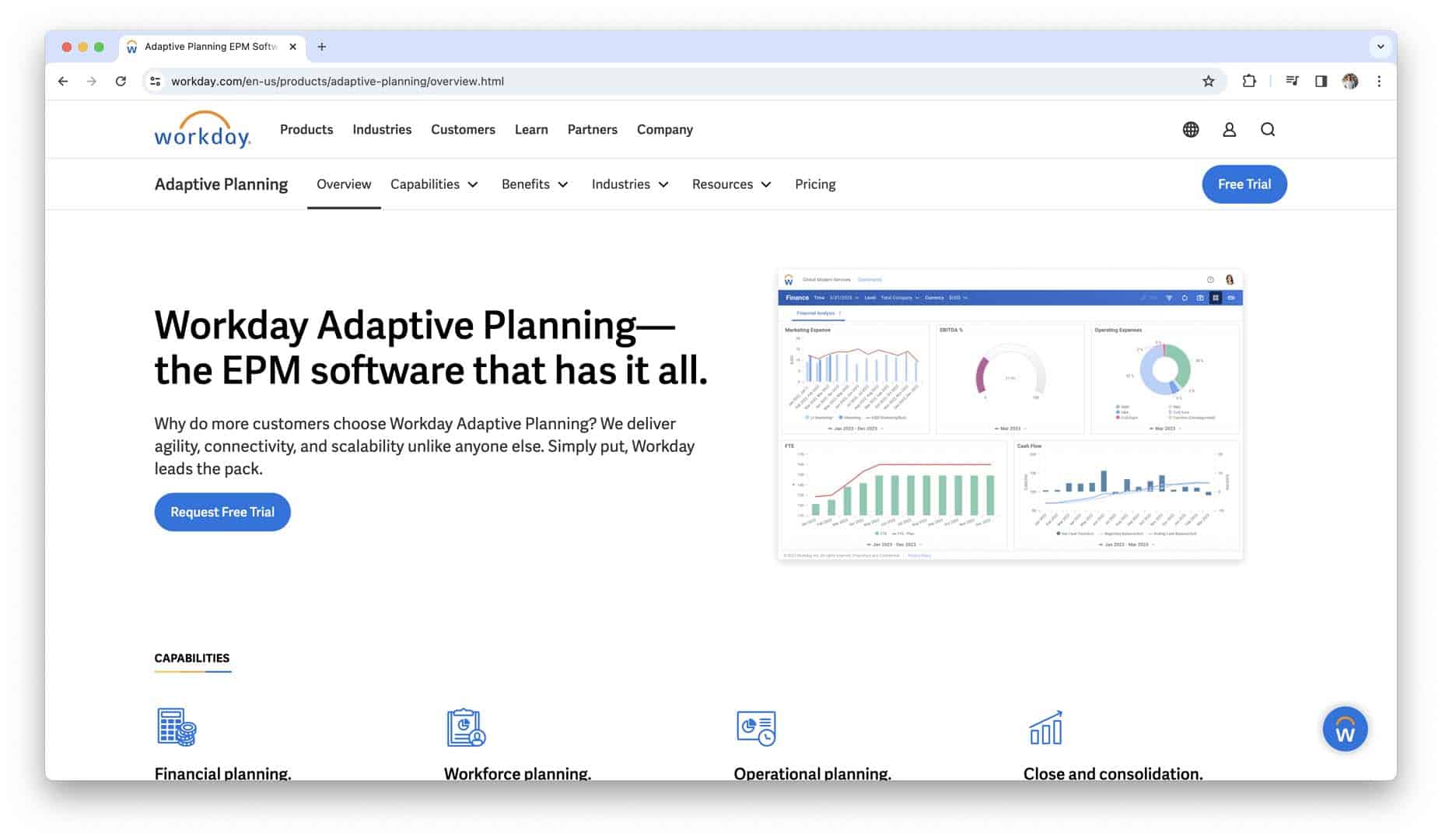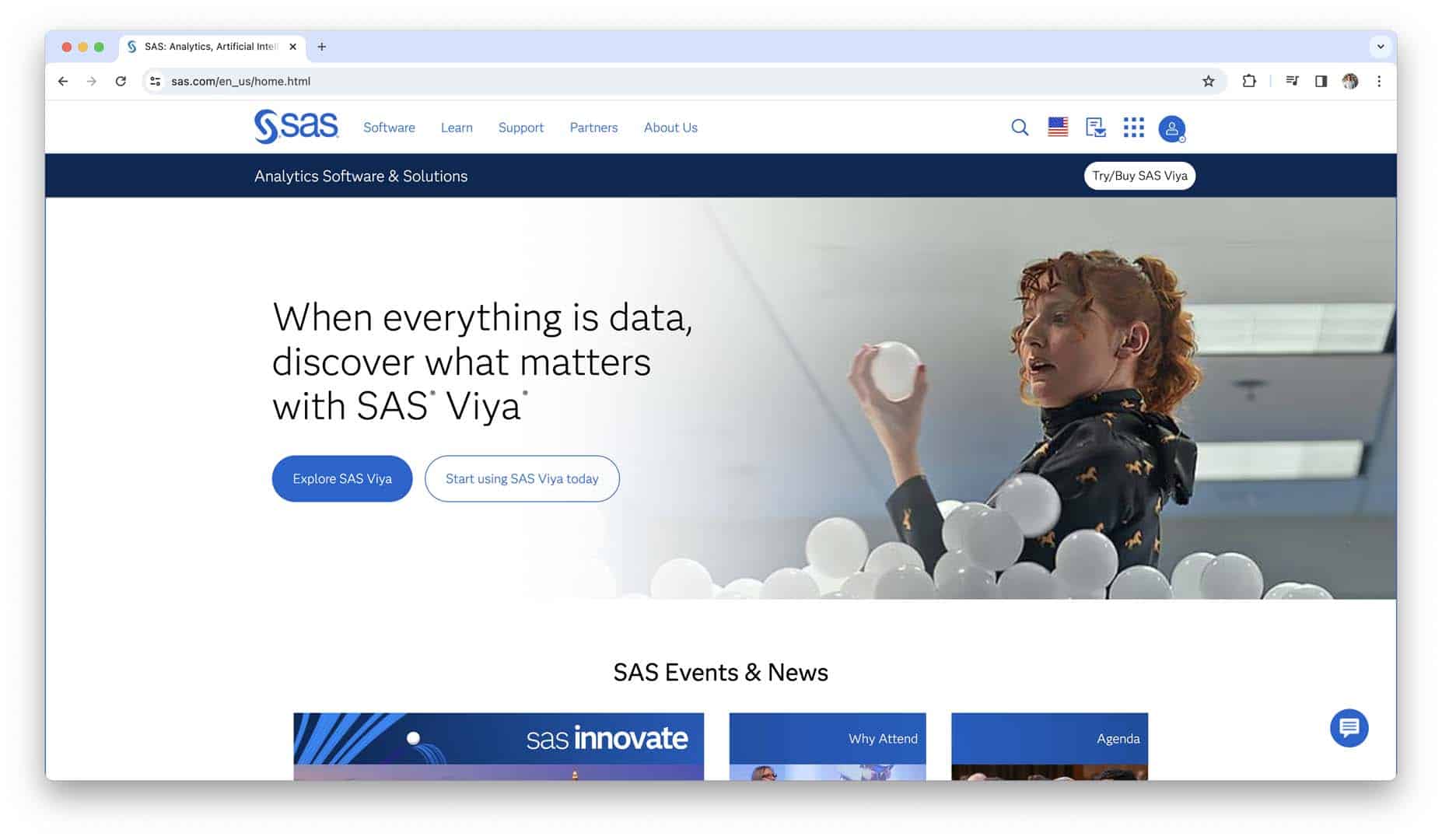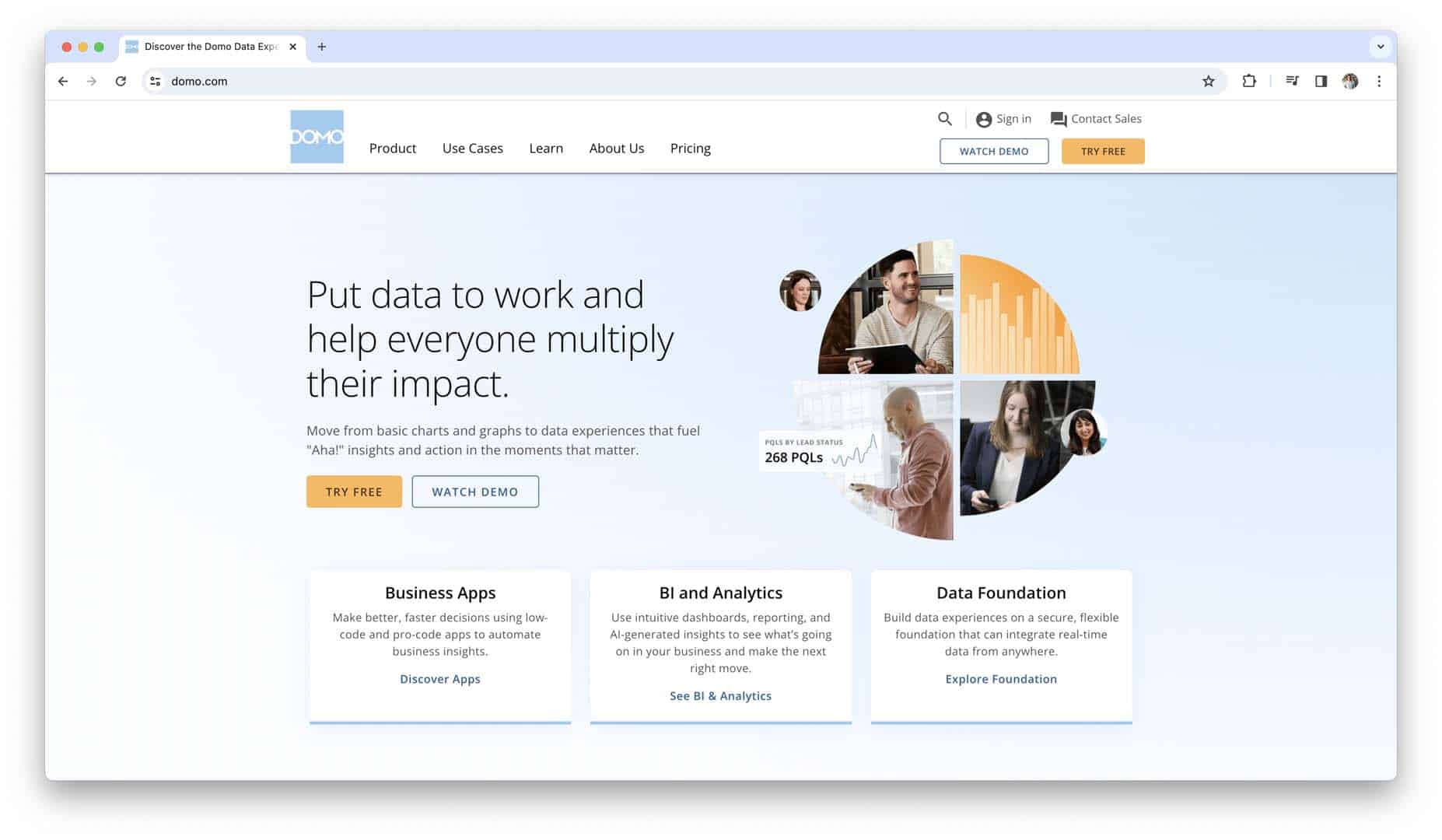- What is Financial Analysis Software?
- Key Financial Analysis Software Features
- Top Financial Analysis Software
- How to Choose the Right Financial Analysis Software?
- How to Implement a Financial Analysis Software?
- Financial Analysis Software Tips and Techniques
- Financial Analysis Software Best Practices
- Financial Analysis Software Challenges
- Conclusion
Are you looking to harness the power of data to make smarter financial decisions for your business? In today’s fast-paced business landscape, having access to accurate and insightful financial analysis is essential for driving growth, mitigating risks, and staying ahead of the competition. Financial analysis software serves as a valuable tool for finance professionals, enabling them to analyze financial data, create forecasts, and generate actionable insights with ease. From basic spreadsheet applications like Microsoft Excel to sophisticated business intelligence platforms, there’s a wide range of software options available to meet the diverse needs of organizations of all sizes and industries.
Whether you’re a small business owner tracking expenses or a finance manager conducting in-depth financial modeling, finding the right financial analysis software can empower you to make informed decisions and achieve your business goals efficiently. In this guide, we’ll explore everything you need to know about financial analysis software, from its key features and benefits to best practices for implementation and common challenges to overcome.
What is Financial Analysis Software?
Financial analysis software encompasses a range of tools and applications designed to assist individuals and organizations in analyzing financial data, evaluating performance, and making informed decisions. The primary purpose of financial analysis software is to streamline financial processes, enhance decision-making capabilities, and drive business growth through data-driven insights.
Importance in Financial Decision Making
Financial analysis software plays a pivotal role in guiding financial decision-making processes across organizations. Here’s why it’s indispensable:
- Data-driven Insights: Financial analysis software provides access to real-time financial data, enabling stakeholders to make decisions based on accurate and up-to-date information.
- Performance Evaluation: By analyzing key performance indicators (KPIs) and financial metrics, organizations can assess their financial health, identify areas for improvement, and optimize resource allocation.
- Risk Management: Financial analysis software helps organizations identify and mitigate financial risks, such as market volatility, credit exposure, and regulatory compliance issues, safeguarding against potential losses.
- Strategic Planning: With advanced forecasting and modeling capabilities, financial analysis software supports strategic planning initiatives, enabling organizations to anticipate future trends, set achievable goals, and develop actionable strategies.
Types of Financial Analysis Software
Financial analysis software comes in various forms, each offering unique features and functionalities tailored to specific needs and requirements. Here are some common types:
- Accounting Software: Provides basic financial analysis features alongside core accounting functionalities, such as bookkeeping, invoicing, and financial reporting.
- Financial Modeling Tools: Specialized software designed for creating complex financial models, conducting scenario analysis, and forecasting future outcomes.
- Business Intelligence (BI) Platforms: Offers advanced data visualization and analytics capabilities for financial analysis, enabling users to explore data, generate insights, and make data-driven decisions.
- Enterprise Resource Planning (ERP) Systems: Integrated software solutions that combine financial analysis functionalities with other business processes, such as inventory management, human resources, and supply chain management.
By understanding the various types of financial analysis software available, organizations can choose the solution that best aligns with their needs, goals, and budget constraints, enabling them to make informed financial decisions and drive business success.
Key Financial Analysis Software Features
When considering financial analysis software, it’s essential to understand the key features that can significantly impact your decision-making processes and overall business operations. Let’s explore these features in detail:
Data Import and Integration Capabilities
Efficient data import and integration capabilities are fundamental for financial analysis software. These features enable you to seamlessly bring in financial data from various sources such as accounting systems, spreadsheets, databases, and external APIs. Here’s why this feature is crucial:
- Streamlined Data Processing: By automating the data import process, you can save time and reduce manual errors associated with manual data entry.
- Data Consistency: Integrated data ensures consistency across different systems, reducing discrepancies and improving the accuracy of financial analysis.
- Real-Time Updates: With real-time data integration, you can access the latest financial information, allowing for more informed decision making.
- Scalability: Choose software that can handle large volumes of data and scale with your business as it grows.
Financial Modeling and Forecasting Tools
Financial modeling and forecasting tools empower you to create complex financial models, perform scenario analysis, and predict future outcomes based on different assumptions. These tools offer several benefits:
- Scenario Analysis: With the ability to model various scenarios, you can assess the potential impact of different business decisions on your financial performance.
- Decision Support: Financial models provide valuable insights that support strategic decision-making processes, such as investment analysis, budgeting, and resource allocation.
- Risk Management: By identifying potential risks and opportunities, financial modeling helps mitigate risks and capitalize on growth opportunities.
- Improved Planning: Forecasting tools enable you to forecast future revenues, expenses, and cash flows, allowing for better planning and resource allocation.
Reporting and Visualization Options
Reporting and visualization capabilities are essential for communicating financial insights effectively to stakeholders across the organization. Look for software that offers:
- Customizable Reports: Tailor reports to meet the specific needs of different stakeholders, such as executives, investors, and department heads.
- Interactive Dashboards: Interactive dashboards allow users to explore data dynamically, drill down into details, and uncover actionable insights.
- Visual Representation: Utilize charts, graphs, and heat maps to present complex financial data in a visually appealing and easy-to-understand format.
- Scheduled Reports: Schedule automated report generation and distribution to ensure timely delivery of financial information to key stakeholders.
Integration with Accounting Systems
Integration with accounting systems is essential for ensuring data accuracy and consistency between financial analysis software and your core accounting processes. Here’s why integration is crucial:
- Seamless Data Flow: Integration eliminates the need for manual data entry, reducing errors and ensuring data consistency across systems.
- Real-Time Updates: Changes made in the accounting system are reflected immediately in the financial analysis software, providing access to up-to-date financial information.
- Streamlined Workflows: Integrated systems streamline workflows by automating data transfer processes, saving time and increasing efficiency.
- Holistic View: A unified platform that integrates accounting and financial analysis provides a holistic view of your organization’s financial health, enabling better decision making.
Risk Assessment and Management Features
Effective risk assessment and management features help identify, analyze, and mitigate financial risks that may impact your organization’s performance and stability. Here’s why this feature is crucial:
- Risk Identification: Identify potential risks related to market volatility, credit exposure, regulatory changes, and operational challenges.
- Quantitative Analysis: Use analytical tools to quantify risks and assess their potential impact on financial performance and business objectives.
- Scenario Planning: Conduct scenario analysis to evaluate the likelihood and severity of various risk scenarios and develop mitigation strategies.
- Compliance Monitoring: Ensure compliance with regulatory requirements and internal policies by implementing risk management controls and monitoring mechanisms.
By understanding and leveraging these key features, you can select a financial analysis software that meets your specific needs and empowers you to make informed decisions that drive business success.
Top Financial Analysis Software
In today’s dynamic business landscape, the market is flooded with a plethora of financial analysis software solutions, each offering unique features and capabilities. However, some platforms stand out as leaders in the industry, trusted by organizations worldwide for their robust functionalities and user-friendly interfaces. Let’s explore some of the top financial analysis software solutions:
1. Microsoft Excel
Microsoft Excel remains a staple tool for financial analysis due to its versatility, familiarity, and extensive range of features. With Excel, users can create complex financial models, perform calculations, generate charts and graphs, and analyze data with ease. While Excel may lack some advanced analytics capabilities compared to specialized software, its widespread adoption and flexibility make it an indispensable tool for finance professionals.
2. Tableau
Tableau from Salesforce is a powerful data visualization and analytics platform that empowers users to explore, analyze, and visualize financial data in interactive dashboards and reports. With Tableau, users can gain actionable insights, identify trends, and communicate findings effectively to stakeholders. Its intuitive drag-and-drop interface and robust visualization options make it a preferred choice for organizations seeking to elevate their financial analysis capabilities.
3. SAP BusinessObjects
SAP BusinessObjects Business Intelligence suite is an enterprise-level business intelligence platform that offers comprehensive reporting, analytics, and data visualization capabilities. With SAP BusinessObjects, organizations can access real-time financial insights, create ad-hoc reports, and share information across departments securely. Its integration with SAP’s suite of enterprise solutions makes it an ideal choice for large organizations with complex financial analysis needs.
4. Oracle Hyperion Planning
Oracle Hyperion Planning is a leading performance management solution that enables organizations to streamline financial planning, budgeting, and forecasting processes. With Hyperion Planning, users can create detailed financial models, analyze variances, and simulate different scenarios to optimize performance. Its robust consolidation and reporting capabilities make it a preferred choice for organizations seeking to enhance financial visibility and control.
5. Intuit QuickBooks
Intuit QuickBooks is a popular accounting software that offers basic financial analysis features alongside core accounting functionalities. With QuickBooks, users can track expenses, manage invoices, and generate financial reports to gain insights into their business’s financial health. While QuickBooks may lack some advanced analytics capabilities compared to other solutions, its ease of use and affordability make it an attractive option for small and medium-sized businesses.
6. Power BI
Microsoft Power BI is a cloud-based business analytics tool that enables organizations to visualize and analyze data from various sources, including financial data. With Power BI, users can create interactive dashboards, reports, and data visualizations to uncover insights and make data-driven decisions. Its integration with other Microsoft products and services makes it a popular choice for organizations already using the Microsoft ecosystem.
7. Anaplan
Anaplan is a cloud-based business planning and performance management platform that offers robust financial modeling and analysis capabilities. With Anaplan, users can create detailed financial models, perform scenario analysis, and collaborate with stakeholders in real-time. Its flexible architecture and scalability make it a preferred choice for organizations looking to streamline financial planning processes and drive agility.
8. IBM Planning Analytics
IBM Planning Analytics is an enterprise-level planning and analytics solution that enables organizations to integrate financial planning, budgeting, and forecasting processes. With Planning Analytics, users can create dynamic, multidimensional models, analyze data from multiple sources, and gain insights to make informed decisions. Its powerful predictive modeling and what-if analysis capabilities make it a valuable tool for finance professionals seeking to optimize performance and mitigate risks.
9. Workday Adaptive Planning
Adaptive Planning, now a part of Workday, is a cloud-based financial planning and analysis (FP&A) solution that empowers organizations to plan, forecast, and analyze financial data with precision. With Adaptive Planning, users can create flexible budgets, model different scenarios, and generate insightful reports and dashboards. Its intuitive interface and powerful collaboration features make it a preferred choice for finance teams seeking to improve efficiency and decision-making.
10. SAS Financial Management
SAS Financial Management is an enterprise-level financial planning and performance management solution that enables organizations to integrate financial processes, optimize planning cycles, and improve decision-making. With SAS Financial Management, users can create comprehensive financial models, perform advanced analytics, and generate customizable reports to support strategic initiatives. Its robust governance and compliance features make it a trusted choice for organizations operating in highly regulated industries.
11. Domo
Domo is a cloud-based business intelligence and data visualization platform that offers advanced analytics capabilities for financial analysis. With Domo, users can connect to various data sources, create interactive dashboards, and collaborate with stakeholders to drive data-driven decision-making. Its AI-powered insights and predictive analytics features make it an ideal choice for organizations seeking to unlock the value of their financial data and gain a competitive edge.
These top financial analysis software solutions offer a wide range of features and capabilities to meet the diverse needs of organizations across industries. Whether you’re a small business owner looking for basic financial analysis capabilities or a large enterprise in need of advanced analytics tools, there’s a solution out there to suit your requirements and help you drive informed financial decisions.
How to Choose the Right Financial Analysis Software?
Selecting the right financial analysis software is a critical decision that can significantly impact your organization’s efficiency, decision-making processes, and ultimately, its bottom line. Let’s delve into the key factors you should consider when evaluating different software options:
Assessing Business Needs and Objectives
Before diving into the array of financial analysis software available, take a step back to assess your organization’s specific needs, goals, and objectives. Consider the following questions:
- What are your primary objectives for implementing financial analysis software?
- What specific features and functionalities are essential to achieve these objectives?
- What challenges or pain points are you hoping to address with the software?
- What are the unique requirements of your industry or niche?
By understanding your business needs and objectives upfront, you can narrow down your options and focus on software solutions that align closely with your strategic priorities.
Budget Considerations
Budget considerations play a significant role in the selection process for financial analysis software. While it’s tempting to opt for the most feature-rich solution, it’s essential to find a balance between functionality and affordability. Consider the following budget-related factors:
- Total Cost of Ownership: Look beyond the initial purchase price and consider the total cost of ownership, including implementation, training, maintenance, and ongoing support.
- Scalability vs. Cost: Evaluate the scalability of the software and determine whether the cost increases as your usage or user base expands.
- Return on Investment (ROI): Assess the potential ROI of the software by quantifying the expected benefits in terms of time savings, productivity gains, improved decision making, and revenue growth.
By aligning your budget with your organization’s strategic objectives and expected ROI, you can make a more informed decision that delivers long-term value.
Scalability and Compatibility
Scalability and compatibility are critical considerations, particularly for growing organizations or those with evolving needs. Here’s why these factors are important:
- Future Growth: Choose a software solution that can scale with your organization as it grows, accommodating increased data volumes, users, and complexity.
- Integration Capabilities: Ensure that the software seamlessly integrates with your existing systems, such as accounting software, ERP systems, and data warehouses.
- Platform Flexibility: Consider whether the software is available as an on-premises solution, cloud-based SaaS, or hybrid deployment, depending on your organization’s preferences and requirements.
By selecting a scalable and compatible software solution, you can future-proof your investment and avoid the need for costly migrations or upgrades down the line.
User Interface and Ease of Use
User interface (UI) design and ease of use are crucial factors that impact user adoption and satisfaction. Here’s why user experience matters:
- Intuitive Design: Choose software with an intuitive and user-friendly interface that minimizes the learning curve and enables users to navigate the system effortlessly.
- Customization Options: Look for software that allows for customization of dashboards, reports, and workflows to tailor the user experience to your organization’s specific needs.
- Accessibility: Ensure that the software is accessible across devices and platforms, with responsive design and mobile-friendly features for users who need to access financial data on the go.
By prioritizing user interface and ease of use, you can enhance user productivity, drive adoption, and maximize the value of your investment in financial analysis software.
Customer Support and Training Resources
Effective customer support and comprehensive training resources are essential for a successful implementation and ongoing usage of financial analysis software. Consider the following factors:
- Support Availability: Assess the vendor’s customer support availability, response times, and channels of communication, such as phone, email, chat, or online forums.
- Training Programs: Evaluate the vendor’s training programs, including documentation, tutorials, webinars, and in-person training sessions, to ensure that users have the knowledge and skills to use the software effectively.
- User Community: Look for software vendors with an active user community or online knowledge base where users can share best practices, ask questions, and troubleshoot issues collaboratively.
By choosing a software vendor that prioritizes customer support and provides robust training resources, you can minimize downtime, accelerate user adoption, and maximize the value of your investment in financial analysis software.
How to Implement a Financial Analysis Software?
Implementing financial analysis software requires careful planning, coordination, and execution to ensure a smooth transition and maximum utilization of the software’s capabilities. Let’s explore the key steps involved in the implementation process:
Pre-Implementation Planning
Pre-implementation planning lays the foundation for a successful rollout of financial analysis software. This phase involves defining goals, establishing timelines, allocating resources, and engaging stakeholders. Here’s what you should consider:
- Stakeholder Alignment: Ensure alignment between key stakeholders, including finance teams, IT departments, executive leadership, and end-users, regarding the objectives and expectations of the software implementation.
- Needs Assessment: Conduct a thorough assessment of your organization’s current processes, workflows, and technical infrastructure to identify any gaps or requirements that need to be addressed by the new software.
- Project Management: Assign a dedicated project manager or implementation team responsible for overseeing the entire implementation process, coordinating activities, and managing timelines and deliverables.
By investing time and effort in pre-implementation planning, you can mitigate risks, set realistic expectations, and lay the groundwork for a successful implementation.
Data Migration and Integration Strategies
Data migration and integration are critical components of implementing financial analysis software, ensuring that historical and current financial data are accurately transferred and synchronized with the new system. Consider the following strategies:
- Data Cleansing: Cleanse and standardize data to ensure consistency and accuracy before migrating it to the new system. Identify and rectify any data quality issues, duplicates, or inconsistencies.
- Integration Protocols: Develop integration protocols and data mapping strategies to facilitate seamless communication between the financial analysis software and other systems, such as accounting software, ERP systems, and data warehouses.
- Testing and Validation: Conduct thorough testing and validation of data migration and integration processes to identify and resolve any errors or discrepancies before going live.
By adopting robust data migration and integration strategies, you can ensure a smooth transition to the new financial analysis software without compromising data integrity or accuracy.
Customization and Configuration
Customization and configuration of the financial analysis software allow you to tailor the system to meet your organization’s specific needs, preferences, and workflows. Here’s how you can customize and configure the software effectively:
- User Roles and Permissions: Define user roles and permissions to control access to sensitive financial data and functionalities based on users’ roles and responsibilities within the organization.
- Report Templates: Customize report templates, dashboards, and visualization tools to align with your organization’s reporting requirements and presentation preferences.
- Workflow Automation: Implement workflow automation features to streamline repetitive tasks, standardize processes, and improve efficiency across finance and accounting functions.
By customizing and configuring the software to suit your organization’s unique requirements, you can maximize user adoption, productivity, and satisfaction.
User Training and Adoption Strategies
User training and adoption strategies are critical for ensuring that employees are proficient in using the financial analysis software and fully leverage its capabilities. Consider the following strategies:
- Comprehensive Training Programs: Develop and deliver comprehensive training programs tailored to different user groups, including finance professionals, analysts, managers, and executives.
- Hands-on Workshops: Conduct hands-on workshops, live demonstrations, and interactive training sessions to provide users with practical experience using the software and addressing real-world scenarios.
- Ongoing Support and Feedback: Offer ongoing support, guidance, and feedback channels to help users overcome challenges, address questions, and provide input for continuous improvement.
By investing in user training and adoption strategies, you can empower employees to make the most of the financial analysis software, drive organizational efficiency, and achieve business objectives.
Financial Analysis Software Tips and Techniques
Once you’ve mastered the basics of financial analysis software, you can unlock its full potential by leveraging advanced tips and techniques. Let’s explore some strategies to enhance your financial analysis capabilities:
Leveraging Automation and AI Features
Automation and artificial intelligence (AI) capabilities can streamline repetitive tasks, uncover insights, and improve the accuracy of financial analysis. Here’s how you can leverage automation and AI features:
- Data Cleansing and Preparation: Use AI-powered algorithms to automate data cleansing and preparation tasks, such as identifying and correcting errors, filling in missing values, and standardizing data formats.
- Predictive Analytics: Implement predictive analytics models to forecast future trends, identify patterns, and anticipate changes in financial performance based on historical data and external factors.
- Anomaly Detection: Utilize AI algorithms to detect anomalies and outliers in financial data, such as unusual transactions, discrepancies, or fraudulent activities, enabling proactive risk management and fraud detection.
By harnessing the power of automation and AI, you can streamline workflows, reduce manual effort, and gain deeper insights into your organization’s financial performance.
Integrating External Data Sources for Enhanced Analysis
Augmenting internal financial data with external sources can provide a broader perspective and deeper insights into your organization’s performance. Consider the following strategies for integrating external data sources:
- Market Data: Incorporate market data, industry benchmarks, and economic indicators into your financial analysis to contextualize performance metrics and identify trends and opportunities.
- Customer Feedback: Analyze customer feedback, surveys, and sentiment analysis data to understand customer preferences, satisfaction levels, and potential impacts on financial performance.
- Competitor Analysis: Monitor competitors’ financial data, market share, and strategic initiatives to benchmark your performance, identify competitive threats, and uncover areas for improvement.
By integrating external data sources, you can enrich your financial analysis and make more informed decisions that drive business growth and competitive advantage.
Utilizing Advanced Modeling Techniques
Advanced modeling techniques enable you to build sophisticated financial models, perform scenario analysis, and simulate various business scenarios. Here are some advanced modeling techniques to consider:
- Monte Carlo Simulation: Use Monte Carlo simulation to assess the uncertainty and variability of financial outcomes by generating multiple scenarios with random variables and probability distributions.
- Sensitivity Analysis: Conduct sensitivity analysis to evaluate the impact of changes in key input variables on financial outcomes, helping you identify the most critical drivers of performance and assess risk exposure.
- Optimization Models: Develop optimization models to maximize returns, minimize costs, or optimize resource allocation based on predefined objectives, constraints, and optimization criteria.
By incorporating advanced modeling techniques into your financial analysis, you can gain deeper insights, improve decision-making accuracy, and mitigate risks effectively.
Customizing Reports for Specific Stakeholders
Tailoring financial reports to meet the unique needs and preferences of different stakeholders enhances communication, engagement, and decision-making effectiveness. Here’s how you can customize reports for specific stakeholders:
- Executive Dashboards: Create high-level dashboards that provide an overview of key performance indicators (KPIs), trends, and strategic insights for executive leadership, enabling them to make informed strategic decisions.
- Departmental Reports: Customize reports for specific departments or functional areas, highlighting relevant metrics, benchmarks, and performance indicators to support departmental goals and objectives.
- Investor Presentations: Develop investor-specific reports and presentations that focus on financial performance, growth prospects, and value creation strategies to attract and retain investor interest.
By customizing reports for specific stakeholders, you can ensure that each audience receives the information they need to make informed decisions and support organizational objectives effectively.
Financial Analysis Software Best Practices
To maximize the effectiveness of financial analysis software and ensure its successful integration into your organization’s workflows, consider implementing the following best practices:
- Establish Data Quality Standards: Maintain data accuracy, consistency, and integrity by establishing clear data quality standards and conducting regular audits. Implement data validation rules, error-checking mechanisms, and data cleansing procedures to ensure reliable financial analysis results.
- Regular Updates and Maintenance: Stay up-to-date with software updates, patches, and new releases to take advantage of the latest features and enhancements. Develop a schedule for regular maintenance tasks such as data backups, system optimization, and performance tuning.
- Security Protocols and Compliance Measures: Protect sensitive financial data from unauthorized access, manipulation, or theft by implementing robust security protocols and compliance measures. Encrypt data transmission, enforce user authentication, and adhere to industry-specific regulatory requirements such as GDPR or SOX.
- Collaboration and Communication Strategies: Promote collaboration and communication among team members by sharing reports, dashboards, and insights generated through the financial analysis software. Foster a culture of data-driven decision-making and encourage cross-functional collaboration to maximize the value of financial analysis efforts.
Financial Analysis Software Challenges
Despite the numerous benefits of financial analysis software, organizations may encounter various challenges during implementation and usage. Here are some common challenges and strategies to overcome them:
- Data Integration Issues: Integrating data from multiple sources can be complex and prone to errors. Implement robust data integration protocols, conduct thorough testing, and involve stakeholders from different departments to ensure seamless data integration.
- User Resistance to Change: Resistance to change is natural, especially when transitioning to new software. Address user concerns proactively by providing comprehensive training, emphasizing the benefits of the software, and soliciting feedback to address user needs and preferences.
- Performance and Scalability Concerns: As data volumes grow, performance and scalability issues may arise. Monitor system performance regularly, optimize database queries and processes, and consider upgrading hardware or migrating to a cloud-based infrastructure to improve scalability and performance.
- Lack of Data Governance: Without proper data governance practices in place, organizations may struggle to maintain data quality, security, and compliance. Establish clear data governance policies, assign roles and responsibilities, and implement data management processes to ensure data integrity and regulatory compliance.
By addressing these common challenges proactively and implementing effective solutions, you can maximize the benefits of financial analysis software and drive business success.
Conclusion
Financial analysis software is a powerful tool that empowers businesses to make informed decisions based on accurate data and insights. By leveraging the features and capabilities of these software solutions, organizations can streamline their financial processes, improve decision-making efficiency, and gain a competitive edge in today’s market. Whether you’re a small business owner or a large enterprise, finding the right financial analysis software can revolutionize the way you manage and analyze your finances.
However, it’s important to remember that financial analysis software is just one piece of the puzzle. Success also depends on factors such as data quality, user training, and ongoing support. By investing time and resources into these areas, organizations can maximize the value of their financial analysis software and drive sustainable growth for the long term. So, whether you’re embarking on your journey with financial analysis software or looking to optimize your existing processes, remember that with the right tools and strategies, the possibilities are endless.
Get Started With a Prebuilt Template!
Looking to streamline your business financial modeling process with a prebuilt customizable template? Say goodbye to the hassle of building a financial model from scratch and get started right away with one of our premium templates.
- Save time with no need to create a financial model from scratch.
- Reduce errors with prebuilt formulas and calculations.
- Customize to your needs by adding/deleting sections and adjusting formulas.
- Automatically calculate key metrics for valuable insights.
- Make informed decisions about your strategy and goals with a clear picture of your business performance and financial health.

